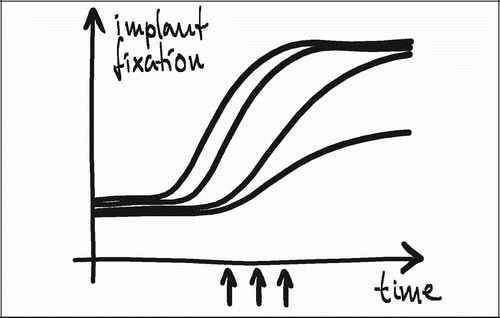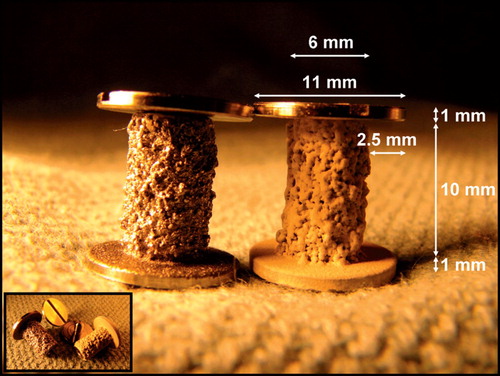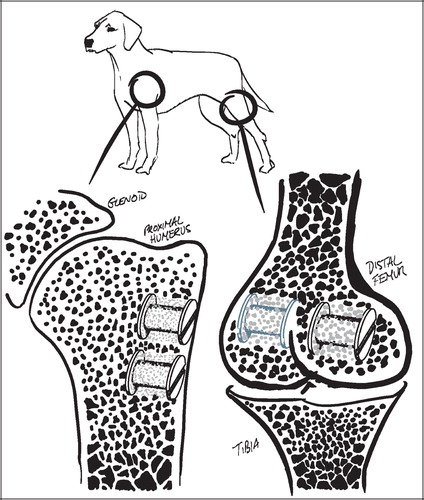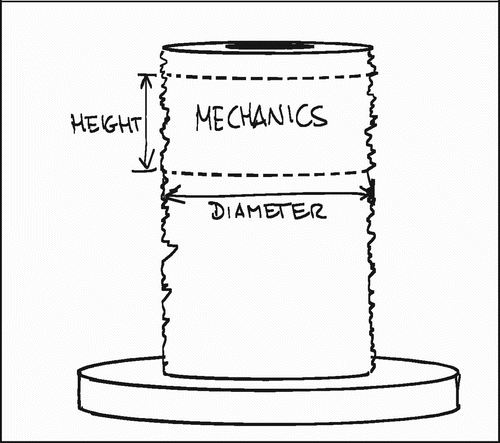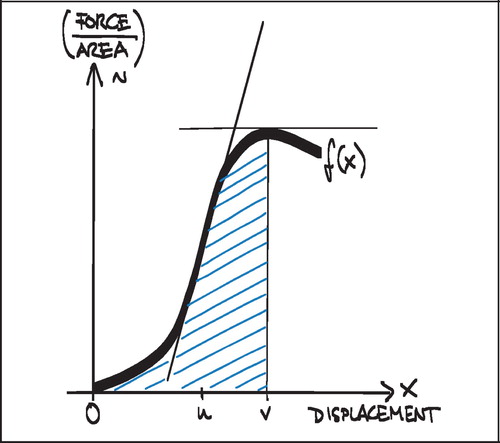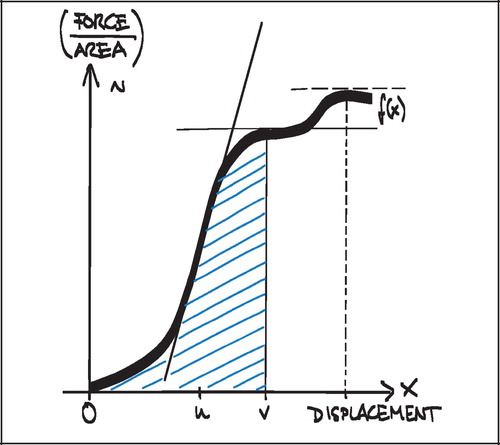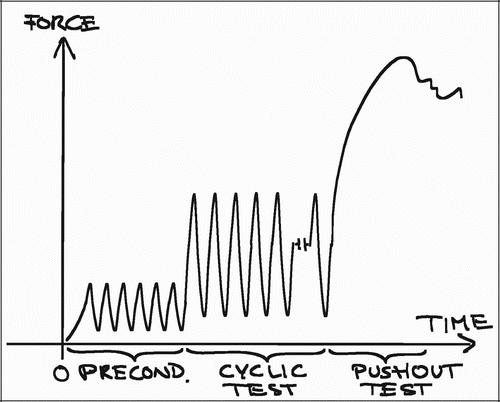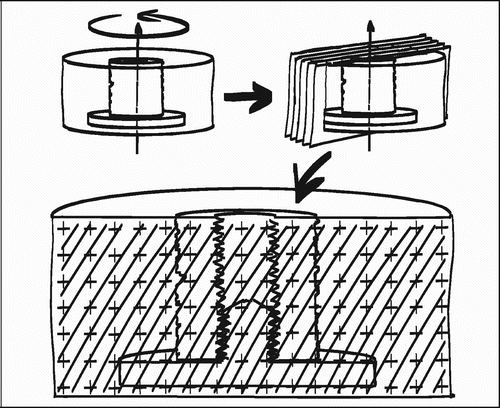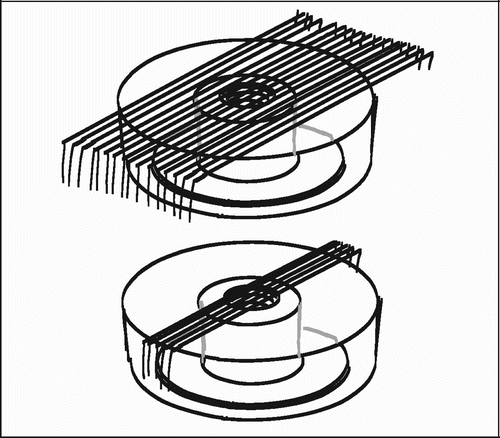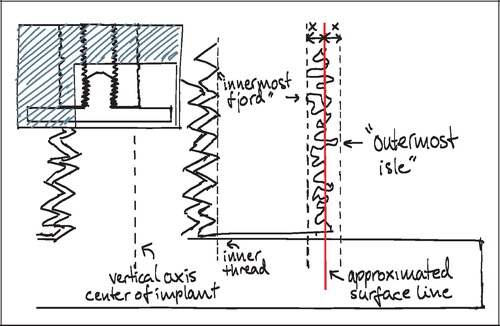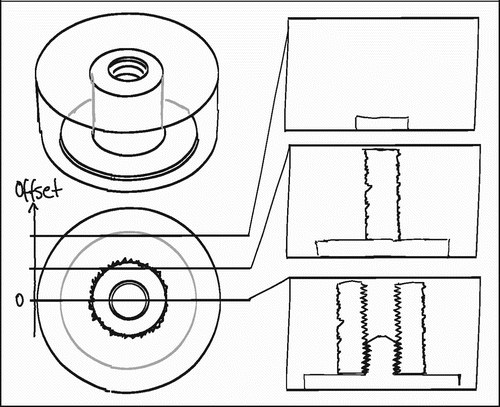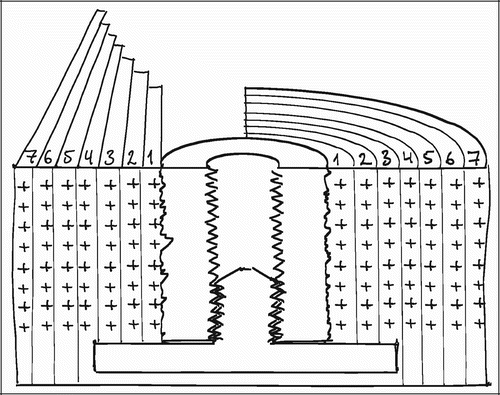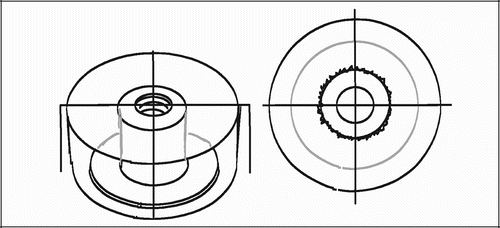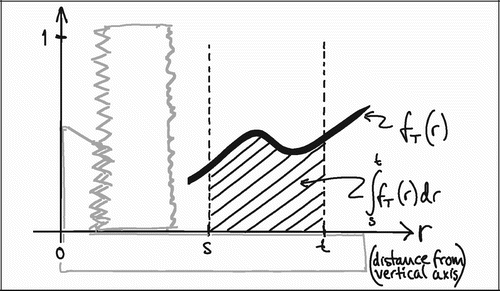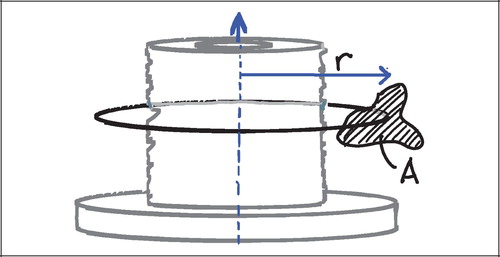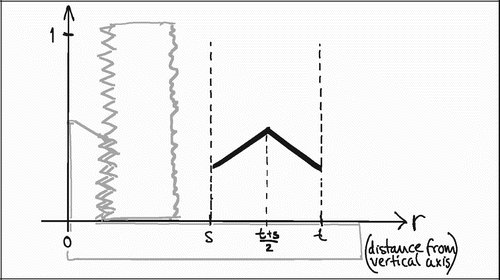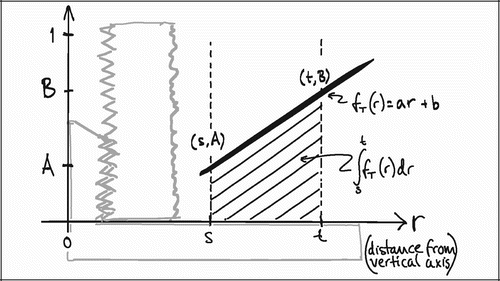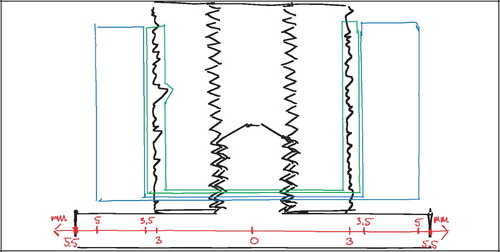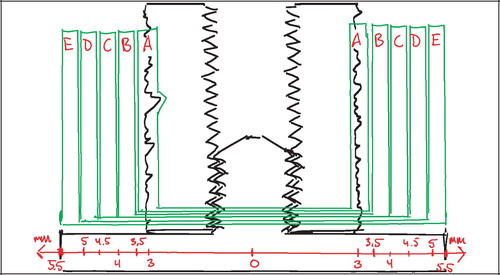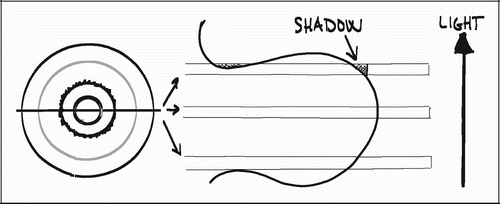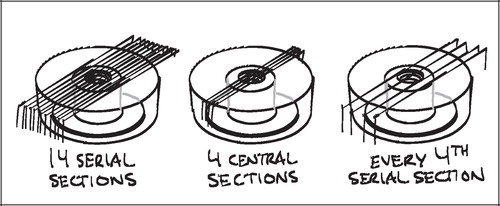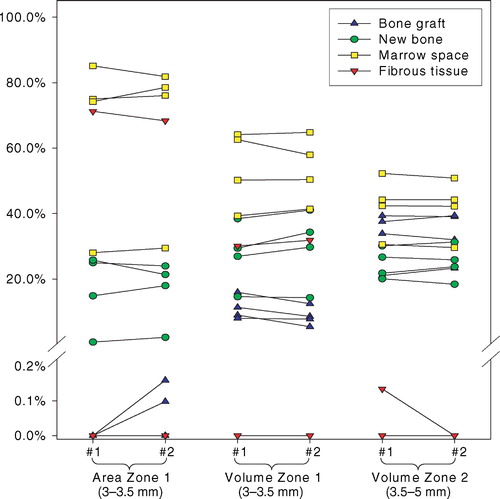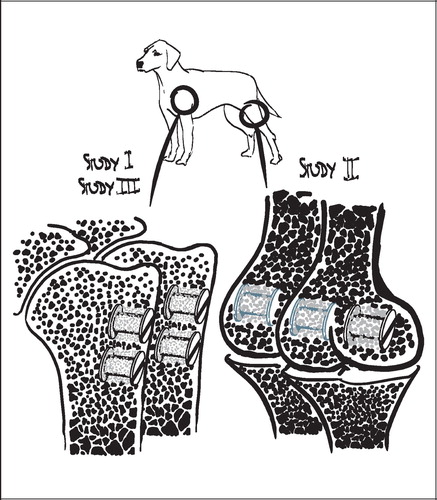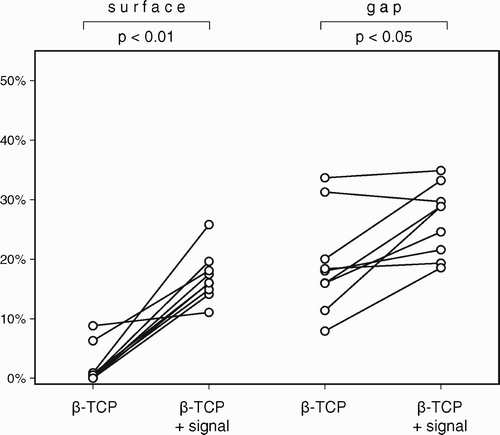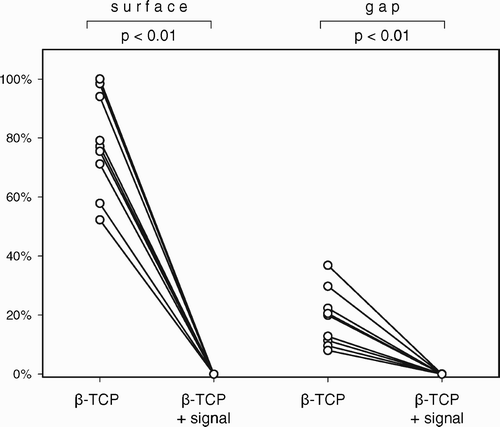Figures & data
Table 1. Mechanical specimens' diameter and height
Figure 7. Force and material stress multiplicity at the bone‐implant interface at axial push‐out test
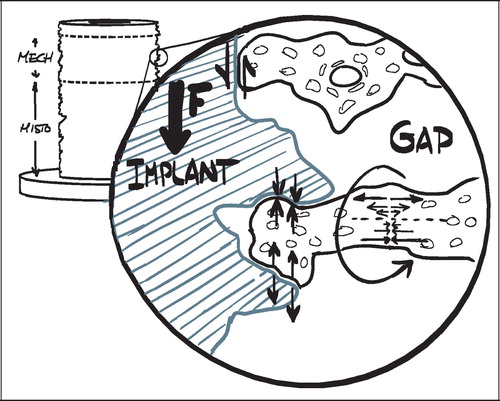
Figure 15. Transverse section of implant (left) and objects with increasing distance to vertical axis

Table 2. Influence of central section bias on sample tissue volume fraction estimates in Zones B+C+D = Zone 2 (3.5–5 mm). VVUR: Non‐weighted tissue fraction. VFAV: distance‐weighted tissue fraction. V/V= VVUR/ VFAV
Figure 17. Relative total tissue representation as a function of distance from the vertical axis, fTOT (r)
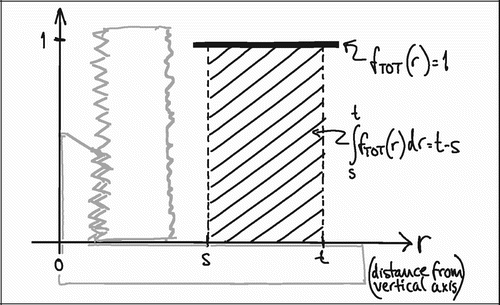
Figure 18. Different geometric centroid for all tissues TOT and a specific tissue T. The area ATOT, has a gravitational centre in the symmetry line of the ROI; r = ½(t + s). Because of the skew tissue distribution of T, the area AT, has a gravitational centre to the right of r = ½(t + s.
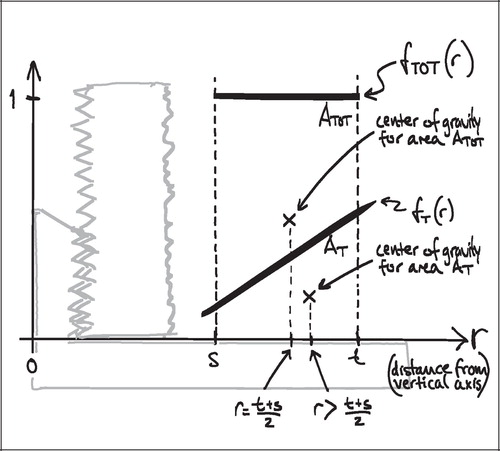
Figure 22. Graphic representation of the VT(VUR)/VT(FAVER) ratio in Zone 1 and Zone 2 as a function of A and B (Eq 19 and Eq 20) under the assumptions of linearity and tissue representation throughout the ROI.
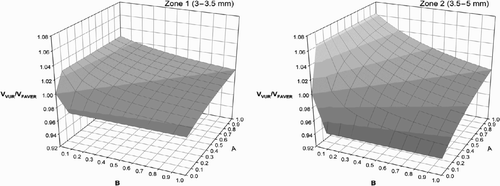
Figure 25. Tissue fractions (not weighted by distance to vertical axis) of the 0.5 mm Zones A‐E of the recount of four implants in study III.
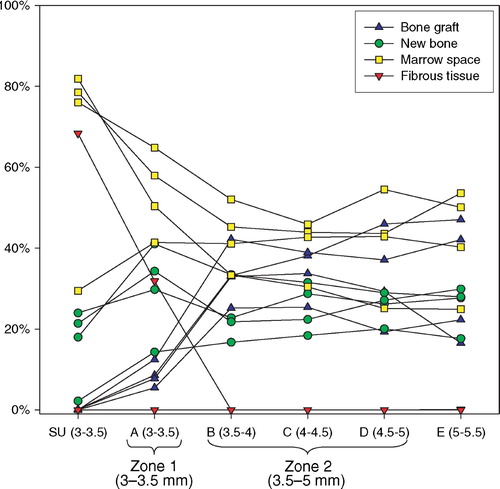
Table 3. Histomorphometrical reproducibility (CV in percent)
Table 4. Change relative to control. “0”: no change. “+”: improvement. “−”: deterioration. The double signs “+ +” and “− −” indicate a group best or group worst
Figure 30. Study I; representative histology. All four implant sections are from the same dog (Ti implants). Upper left: Control implant with allograft only. Upper right: Allograft added rhBMP‐2. Lower right: Allograft added pamidronate. Lower left: Allograft added rhBMP‐2 and pamidronate in combination.
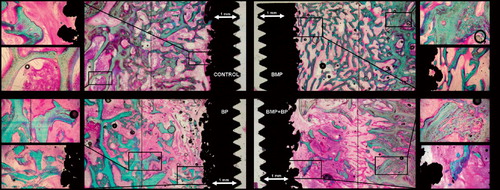
Table 5. Change relative to control. “0”: no change. “+”: improvement. “−”: deterioration. The double signs “+ +” and “− −” indicate a group best or group worst
Table 6. Change relative to control. “0”: no change. “+”: improvement. “−”: deterioration
Figure 31. Study III; histology from two implants grafted with β‐TCP granules with Colloss E (left side) and without Colloss E (right side). Implants are not representative of group means and are from different animals.

